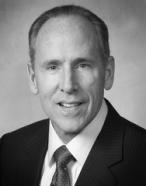The Promise of Distributed Generation
Start Your Reciprocating Engines!

|
BY MARTIN ROSENBERG Editor-in-chief, EnergyBiz |
Distributed generation is transformational and it is creating new business opportunities, according to Mark M. Little, GE chief technology officer and senior vice president. He recently talked with EnergyBiz. Below are his comments, edited for style and length.

ENERGYBIZ: As more distributed generation is used and the grid becomes more complex, what opportunities are created?

|
|
Little: We think distributed power is a very interesting opportunity. We've actually built a business around distributed power. It's part of our overall power and water business, which is the single biggest business GE has put forward. We want to create solutions that are small in scale, so people can use them locally, and still very efficient. So a core piece of this would be reciprocating natural gas engines that are very good for distributed energy.
ENERGYBIZ: Are you producing this now or is it on the horizon?
Little: No, this is a business we have today. And we're innovating around that. One very interesting innovation is around solid oxide fuel cells. We are looking at hybrid systems. We put in a fuel cell first that runs on, say, natural gas, or it could be diesel fuel. We extract electricity from that. We then take the residual fuel and put it through a reciprocating engine or maybe even a turbine engine, and extract electricity from that. Today's central plants are 60 percent efficient. These systems could be 70 percent efficient at a local level. That's a real breakthrough.
ENERGYBIZ: What other innovations do you see for distributed generation?
Little: Renewable energy varies with the flow of the wind or the clouds going by the sun. Grids have to adapt to that kind of variability. We've learned how to enable grids to sustain those kinds of fluctuations in a significant way. As a result, for instance, in Hawaii we can put up to 30 percent renewables on the grid. That kind of resilience is applicable for distributed power, where you have power flows coming from consumers or from industry back into a grid. The grid system needs to be able to handle these kinds of power flows. We have the technology to do that. We are building a battery business that will enable producers to moderate the power flows. Imagine a wind supplier today who wants to bid into a grid at a firm level for, say, 15 minutes. They never know how the wind is going to blow, so they have to discount the capacity and underbid what they could produce with strong winds. If you put a battery with that system, they can firm up their energy commitment and build to full capacity all the time, enabling our customers to make more money and our users to have a more stable and resilient supply.
Read more:
"It's All About Capital - The Threat of Distributed Generation"
Subscribe to award-winning EnergyBiz magazine by clicking here.